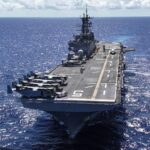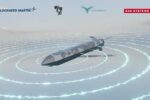Sea Machines Robotics Inc. has unveiled six new autonomy solutions tailored for defense—consisting of cutting-edge hardware, open software interfaces, cloud-based analytics, and a powerful new Uncrewed Surface Vessel (USV) called STORMRUNNER. This marks a strategic pivot toward delivering networked, dual-use maritime assets optimized for modern naval needs and asymmetric fleet operations.
1. Sea Machines Expands the Stack
Since its founding in 2015, Sea Machines has focused on modular, retrofit-friendly autonomy systems adaptable to commercial and government vessels. Their pedigree includes projects with the U.S. Department of Defense and major maritime integrators.
Their latest release comprises:
SM300-SP: A streamlined autonomy module built for “attritable” vessels—lightweight, affordable drones not needing full-classification approvals.
SM300-NG: The next-gen autonomy core, offering 200% more computing power in a smaller footprint, available in pure-digital or digital+analog variants—all within class-approved standards.
SMLink Stream & Control APIs: Opens data streams and control interfaces to third parties—reflecting Sea Machines’ push for interoperability and modular mission programming.
FleetViewer: A cloud-based fleet visualization dashboard that aggregates real-time vessel data and streaming imagery—ideal for command centers overseeing multiple autonomous units.
STORMRUNNER USV: A new 8-meter HDPE USV designed for defense missions, boasting 40 knots top speed, 500+ nautical miles range, and a 1,100-lb payload capacity. It leverages SM300-SP and integrates sensors and comms in a rugged frame—the successor to their 7-meter “SELKIE.”
2. Tactical Advantages of the New Lineup
Modular & mission-flexible: Whether retrofitting small workboats or deploying standalone attritable vessels, Sea Machines now supports everything from agile hardware to fleet-wide command systems.
Performance leap: SM300-NG doubles computation power, broadening its usability in compute-intensive operations—like real-time sensor fusion or on-board autonomy decision-making.
Open architecture: SMLink APIs let naval programs plug into autonomy stacks—for mission tailoring or hybrid control models.
Operational visibility: FleetViewer boosts situational awareness across unmanned assets, showing a path toward autonomous fleet operations.
STORMRUNNER’s capabilities: High speed, endurance, and payload enable roles in ISR, electronic warfare, or kinetic operations—delivering asymmetric advantages for naval forces.
3. Strategic Implications
Defense Forces Gain
Force expansion without large platforms: Smaller, autonomous STORMRUNNER and SM300-based sUSVs offer new tools for coastal, littoral, and open-sea missions without high-cost ship deployments.
Rapid scaling: Commercial-grade hardware with defense-ready software allows militaries to test and scale operations aggressively.
Networked operational models: From swarm deployment to mission command, Sea Machines’ ecosystem supports emergent doctrines of distributed, unmanned fleets.
Dual-Use Ecosystem Strengthened
The open and modular nature of Sea Machines’ solutions promotes both export adaptability and interoperability with allies.
Builds on credibility established through prior engagements like DoD-funded autonomous barge trials, solidifying the company’s defense credentials.
4. Caveats and Challenges
Endurance vs. class standards: SM300-SP foregoes class approvals—expediting deployment, but limiting sea-state resilience and insurance acceptability.
Security & data control: Open APIs such as SMLink empower flexibility—but also demand hardened authentication and encryption for military use.
Integration complexity: Ship- or network-level integration of autonomy systems requires retraining, infrastructure updates, and doctrine adaptation.
Competition landscape: Other defense autonomy vendors (e.g. Textron, L3Harris) are also advancing—Sea Machines must maintain speed and reliability to stay ahead.









